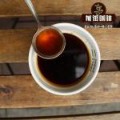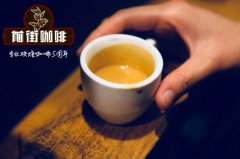What is the basic process of making coffee? what is the biggest difference between washing and drying?

The process of making coffee basically includes picking, drying, roasting, grinding and cooking.
There are two kinds of picking, manual and mechanical, because the maturity of handmade coffee beans is uniform, and there is no mildew, and so on, so high-quality coffee beans basically use this method.
There are also two kinds of drying, sun drying and washing. Coffee beans are wrapped in peel, pulp and a thin film called silver skin. Sun-drying is the most economical, simple and oldest method, which is dried in the sun and then peeled off the pulp and silver on the sheller. The disadvantage of this method is that the coffee will stick to the smell of soil. But the flavor can be well preserved. However, with the development of science and technology, we have begun to use dryers to dry coffee fruits.
The biggest difference between washing and drying is that the peel and pulp of the fruit are removed, the coffee fruit is placed in a huge tank, the ripe fruit sinks to the bottom and separated from the floating immature, and then the fruit is crushed by machine. The coffee beans are fermented to remove the slimy fruit oars from the silver skin, and then dried, but the silver skin is also included at this time. When it is exported, the silver skin is removed by a peeling machine, which can retain the original flavor of the beans. This method is usually used for high-quality Arabik.
Roasting can make the ingredients of coffee beans react, convert starch into powdered sugar and acidic substances, and carbonize cellulose to varying degrees. Baking is divided into shallow, medium, deep and extra-deep baking. Generally speaking, the lighter the sour taste, the stronger the sour taste, the deeper the coffee, the more bitter the coffee is, and the darker the color is, the bitterness is very obvious when it is roasted very deep, and there is a light smell of soot.
Important Notice :
前街咖啡 FrontStreet Coffee has moved to new addredd:
FrontStreet Coffee Address: 315,Donghua East Road,GuangZhou
Tel:020 38364473
- Prev

The flavor characteristics of coffee are actually the products of a chemical compound. Where does the aroma of coffee come from?
There are too many factors in coffee that can affect coffee flavor: variety, baking methods, brewing methods, treatment methods. However, when you start to analyze it, the flavor characteristics of coffee are actually a product of chemical compounds. Of course, these compounds are affected by the way we roast coffee, the type of coffee, and the height at which we plant it. But if we really want to optimize,
- Next

What are the effects of different roasting methods and degrees of roasting on the taste of coffee?
Coffee roasting time determines the taste, aroma, taste and acidity of coffee, so to learn more about coffee, you must first understand the effects of different roasting methods and roasting degrees on coffee taste. To put it simply, baking is to let the raw beans absorb the high temperature in the baking oven in constant rotation until they are ripe to the ideal level. During the roasting process, coffee beans
Related
- Beginners will see the "Coffee pull flower" guide!
- What is the difference between ice blog purified milk and ordinary milk coffee?
- Why is the Philippines the largest producer of crops in Liberia?
- For coffee extraction, should the fine powder be retained?
- How does extracted espresso fill pressed powder? How much strength does it take to press the powder?
- How to make jasmine cold extract coffee? Is the jasmine + latte good?
- Will this little toy really make the coffee taste better? How does Lily Drip affect coffee extraction?
- Will the action of slapping the filter cup also affect coffee extraction?
- What's the difference between powder-to-water ratio and powder-to-liquid ratio?
- What is the Ethiopian local species? What does it have to do with Heirloom native species?

